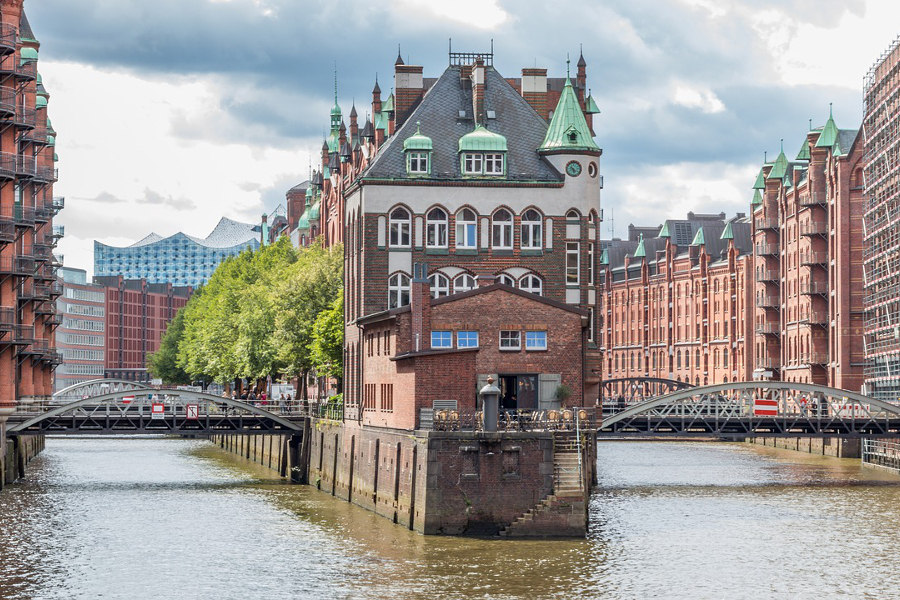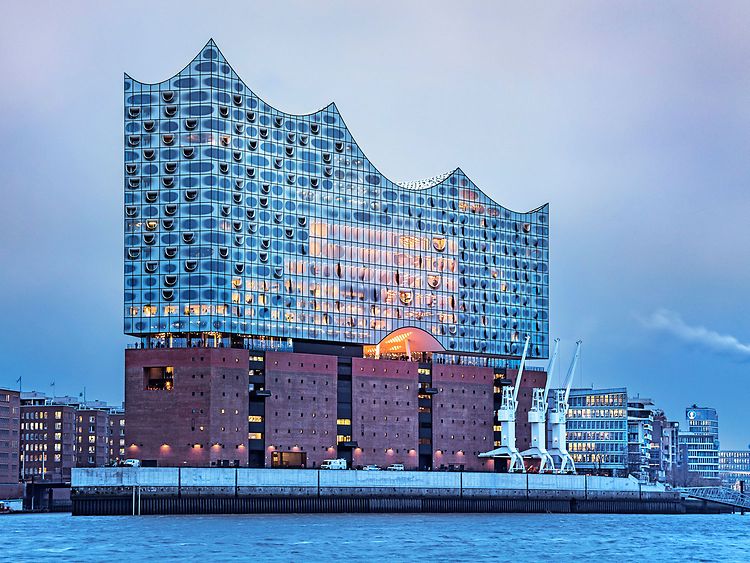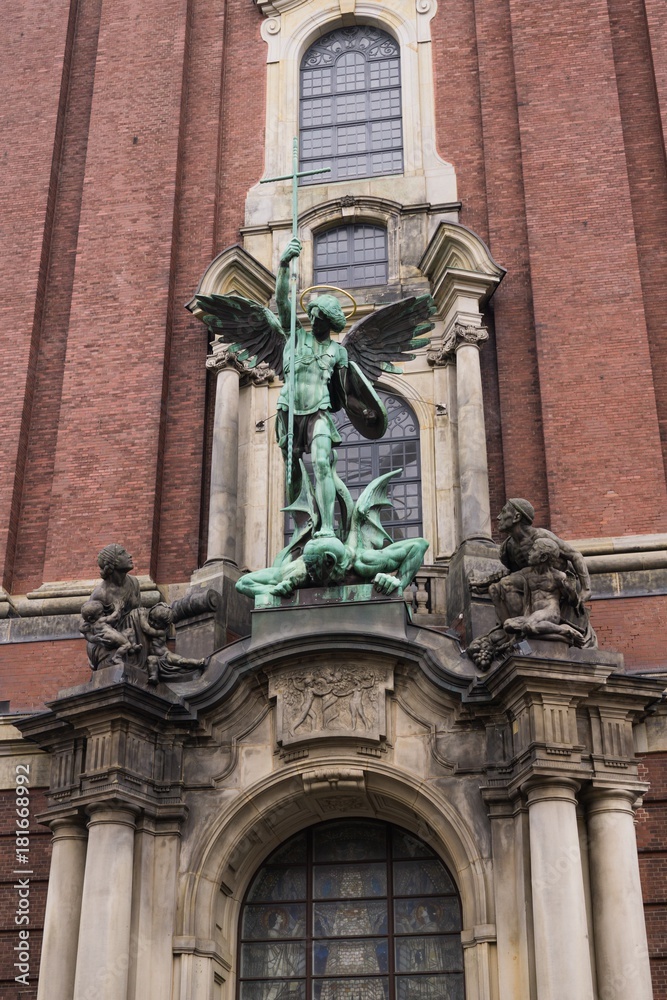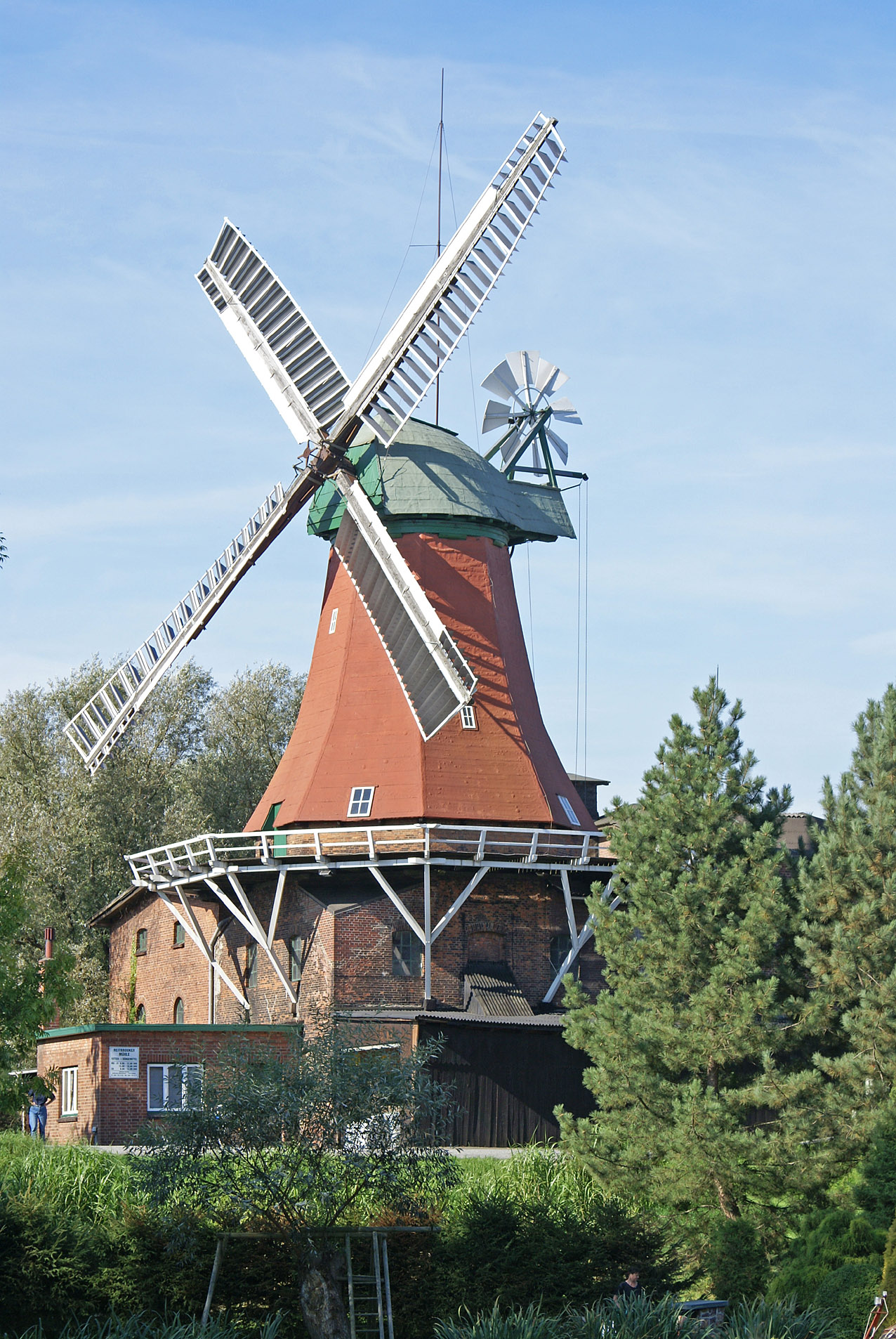Germany – Hamburg August 25-27, 2019
1. Museums. Compared to where I have just come from in Eastern Europe and Finland, German museums are relatively expensive. Few offer reductions for seniors, but almost all do for students.
Disappointingly, the level of English is the worst of any museum system I have ever been to. Most have zero. I do these fast as there is nothing to read and little to learn.
About ¼ of the city museums are closed on Mondays and about ¼ on Tuesdays. As I was in Hamburg on a Monday/Tuesday, it was a nightmare figuring out how to see those open and use my Hamburg City Pass effectively.
2. MUSEUM PASSES
• Hamburg Card. Offers free public transportation (including the airport), 7-25% off several museums and 17-28% off harbour cruises and Alster Lake cruises. Multiple prices depending on day(s) and individual or family.
• Hamburg City Pass (Turbopass). Free entry to 15 museums, 5 tours including Hop-On-Hop-Off buses, free entry to 11 attractions and discounts for shopping and some restaurants. 1 day – €38.90, 2 days – €55 (this is what I purchased). You can add public transportation for extra.
You should be able to buy online (www.turbopass.de) but the web site would not accept my email address. I purchased it at the Radio Hamburg office at the Central Train Station (cash only). Also at the Hamburg Welcome Center at the airport and the St Pauli Tourist Office.
• Five Kunst Musuems.
Hamburg is the second-largest city in Germany and 8th largest city in the European Union with a population of over 1.8 million.
One of Germany’s 16 federal states, it is surrounded by Schleswig-Holstein to the north and Lower Saxony to the south. The city’s metropolitan region is home to more than five million people. Hamburg lies on the River Elbe and two of its tributaries, the River Alster and the River Bille.
The official name reflects Hamburg’s history as a member of the medieval Hanseatic League and a free imperial city of the Holy Roman Empire. Before the 1871 Unification of Germany, it was a fully sovereign city state, and before 1919 formed a civic republic headed constitutionally by a class of hereditary grand burghers or Hanseaten.
Beset by disasters such as the Great Fire of Hamburg, North Sea flood of 1962 and military conflicts including World War II bombing raids, the city has managed to recover and emerge wealthier after each catastrophe.
Hamburg is Europe’s third-largest port. Major regional broadcaster NDR, the printing and publishing firm Gruner + Jahr and the newspapers Der Spiegel and Die Zeit are based in the city. Hamburg is the seat of Germany’s oldest stock exchange and the world’s oldest merchant bank, Berenberg Bank. Media, commercial, logistical, and industrial firms with significant locations in the city include multinationals Airbus, Blohm + Voss, Aurubis, Beiersdorf, and Unilever.
The city is a major international and domestic tourist destination. It ranked 18th in the world for livability in 2016. The Speicherstadt and Kontorhausviertel were declared World Heritage Sites by UNESCO in 2015.
Hamburg is a major European science, research, and education hub, with several universities and institutions. Among its most notable cultural venues are the Elbphilharmonie and Laeiszhalle concert halls. It gave birth to movements like Hamburger Schule and paved the way for bands including The Beatles. Hamburg is also known for several theatres and a variety of musical shows. St. Pauli’s Reeperbahn is among the best-known European entertainment districts.
An der Alster 1. In the NM “Modern Architecture Buildings” series, this 5-story office building is characterized by all round corners and windows.
Oevelgönne Museum Harbour. With zero English, this open-air museum surrounds a small harbour holding 3 large boats and about 12 smaller ones. The “office” is basically a kitchen. I couldn’t figure anything out and learned little.
Museum für Kunst und Kultur an der Elbe (Jenisch House). West of the city center in Jenisch Park, this 3-story manor house has two floors of furnishings, wallpaper, stucco-decorated ceilings and upper walls and some old art. The 3rd floor has art from the 1920s-1930s, some of it quite interesting. €7, no reduction*
Ernst Barlach House. Also in Jenisch Park, this one-story white painted brick building had an exhibit by Norbert Prangeberg (1949-2012) of brightly painted terracottas. Go to the web site to see the very unusual opening days.
Loki Schmidt Botanical Garden. Near Jenisch Park, this garden is run by the University of Hamburg and is quite lovely. There are several giant sequoias at the entrance, nice beds, a vegetable garden, pyramidal greenhouses, a Bible garden and a small pond. Free
Altona Museum. Altona was a Danish city with a harbour, starting as a fishing village and whaling from 1682-1836. See hundreds of wonderful boat models, half boat hulls, 40 ship figureheads, many statues, old art and some wonderful exhibits of fishing techniques with boats on a glass shelf and the nets etc visible in the water under. Zero English. €8.50, no reduction*
The Jewish Cemetery of Altona Königstraße. Sephardic Sepulchral Culture of the 17th and 18th century between Europe and the Caribbean, A Tentative WHS
(15/01/2015)
The Jewish cemetery of Altona is the oldest of its kind in Northern Europe. A relic from the early 17th century, this cemetery largely survived the destruction and desecration of Jewish holy sites during National Socialism and the bombing of Hamburg during World War Two.
The Jewish cemetery of Altona offers a glimpse into a distant world with very distinct sepulchral customs. The cemetery was originally established in 1611 by the local Sephardim community, which had immigrated from the Iberian peninsula (specifically from Portugal) to the North of Europe to escape religious persecution. Most of them had been converted to Catholicism against their will, but continued to practice their ancestral faith privately. The cemetery was soon extended to include an Ashkenazim section as well. The Ashkenazim descend from the Jews that first settled in the Rhineland in the Middle Ages.
Sephardi Jews started moving to Hamburg in the 1500s; another large part of the community emigrated to Thessaloniki, in Greece. Hamburg, a commercial powerhouse at the time, was a city-state with its own rules. Though Jews were not persecuted in Hamburg, they were not allowed to establish a cemetery for their community within city limits, for the Hanseatic city was a Lutheran stronghold and non-Lutheran communities were forbidden from purchasing land to be used for burials there. Altona, however, was not part of Hamburg back then but of the County of Holsten-Pinneberg, whose ruler agreed to sell the community the piece of land on which they established the cemetery. Altona was eventually merged into Hamburg in 1937.
Even though the symbols used by both communities are largely the same, the two sections of the cemetery are distinct from each other, since the Sephardim and Ashkenazim had a partially different sepulchral culture. Also, some of the inscriptions on the graves are in different languages: the Sephardim traditionally speak Judaeo-Spanish (or Ladino), which is a Latin language, while the Ashkenazim speak Yiddish, a West Germanic language. Even though most epitaphs are written with Hebrew characters (which I can’t read), some are written in the Latin alphabet.
The cemetery saw extensive damage during the National Socialist years as a result of demolition, anti-Semitic vandalism and the bombardment of the city. However, the damage was not as extensive as it could have been, and over 8100 graves from around 9000 survived, either partially or entirely. Efforts to catalog and restore the gravestones were carried out to preserve the place, which stands as testament to the history of Jews in Northern Europe.

The condition of the cemetery is surprisingly good considering the destruction not only of Jewish sites in Hamburg but also the obliteration of the city as a whole. When I first walked in I was greeted by a smiling skull, which stood on a perfectly preserved gravestone engraved with a prayer. The text was in both Ladino and Hebrew. The motif of the skull was also present in the Christian burial culture of the time, as it embodies the idea of memento mori—remember that you will die. As morbid as this sounds, the phrase is supposed to affirm life, meaning that one should enjoy it because someday it will end. Navigate through a sea of gravestones—some standing tall, many lay flat on the ground, and others were broken and in pieces. Some were covered by a thin layer of green moss, and some had been eroded by the elements to the point of displaying nothing but a blank space. Some of the previous visitors had placed pebbles on top of many a gravestone according to Jewish tradition.
Hours: Tuesday, Thursday 3-6, Sunday 2-5. Parking is difficult.
Sankt Pauli Museum. Located in an old bar on the corner of a block, this museum tells the story of the St Pauli district of Hamburg. Located between the fortified city of Hamburg and Altona, a Danish held city, it was always the counter-culture area of Hamburg. Using maps and many photographs, it relates the days in the 1800s when it was home to many brothels and bars to the 1960s when it had a live-sex theatre and the Star Club where the Beatles played. There is still a red-light district screened of by panels across the street – men only. It is just like Amsterdam with women in windows. The streets around here have many prostitutes all aggressively offering their services – €50-60/½hour. All speak good English. Business didn’t seem very good.
There is zero English, but the lovely woman in charge gave me a long tour of the museum, explaining everything. €5, 4 reduction*
Panoptikum. The Madame Tussauds of Hamburg, this good wax museum has the figures up close. Many were German celebrities and politicians who I didn’t recognize but there were many others that were quite good. Trump is well done. Even some anatomical dissections and exhibits on how it is all done. €6.50, 6 reduction*
Hamburg City Musuem (Museum für Hamburgische Geschitchte). This large museum over several floors, it is mostly about the history of the city, the huge role of the harbour, the fire of 1842, and the cholera epidemic of 1892. Has a little bit of everything, including a huge model railway system that operates on the hour. Also history of the Jews of Hamburg, porcelain, silver, glass, art, period homes, clothes and fashion, stained glass and a lot of furniture. €9.50, no reduction*
Museum of Work. In an old brick industrial building, this has exhibits on metal work including badges and a large printing section. Zero English and I got very little out of the museum.
Rickmer Rickmers. This 3-masted, full-rigged, steel hulled sailing ships was built in 1896 by the Rickmers Company in Bremerhaven. It was named after the 3-year-old grandson of the company founder. It represents the shipbuilding art of the day with respect to frame bending, the frame connection, the riveting and frame-deck connection and the joining of the framing in the stern.
It is 97m long, 12.2m wide, draught 6m, sail area 3,500m2 when fully rigged. Its first voyage carried 3.070 tons of coal for Hong Kong and returned with rice and bamboo from Saigon. It made several successful journeys including 14 around the world trips, mostly freighting coal, nitre, petroleum, bamboo, rattan, rice and wheat. It was one of the last sailing ships used for freight. Once the Suez Canal opened in 1869, steamships became the main freighters. Because of unfavourable winds, it could not use the canal and continued to go around Cape Horn, but had low operating costs and large cargo areas.
In 1904, in a typhoon off South Africa, the 3rd mast had to be lopped off and it was converted to a barque.
It was sold in 1912 to a Hamburg-based company, its name changed to MAX and sailed to Chile in the saltpetre trade. In 1916, it was confiscated by the Portuguese in the Azores, renamed Flores and used to transport war material for the English. Its life as a mainsail freighter came to an end after the war.
The Portuguese recomissioned it as a navy training ship called the Sagres. It held 400 trainees. Two diesel engines were added in 1030. In 1958, it won the regatta of the training ships. In 1962, it was derigged and placed as a hulk in a ship depot until 1983 when it was purchased by Hamburg and completely renovated. It became a ship museum in 1987 docked at the St Pauli Pier.
It’s a beautiful ship and it is possible to visit the entire vessel. There is a restaurant and escape room. €6, no reduction*

Day 2
I had arranged an oil change for 8am at a small local garage. It was great as I learned how to do it and a lot more about maintenance (brakes, tires, AdBlue). It also cost ½ of what I paid in Serbia.
Hamburg Planetarium. The 2 levels surrounding the foyer had many TV screens showing a wide range of interesting material, much of it of NASA origin: Earth at Night, Gravity waves as seen by satellite after the Japanese tsunami, Earth Watch (satellite images of interesting places) and News from Planet Earth. The show in the planetarium was on galaxies and in English with German subtitles. €11, 9 reduction with Hamburg City Pass
Police Museum. Situated in a large police station, this museum showed the history of the Hamburg police department from its founding in 1814 through various time periods. The population of Hamburg grew from 326,000 in 1870 to over 1 million in 1910 necessitating a huge growth period for the police. During the Nazi years, the police gave complete support to the regime. €8, no reduction
Museum of Ethnology. This had surprisingly little about Germany, but large sections on North American Indians (2-8million in 1500, reduced to 200,000 by 1900), wolves, women artists in the museum (drew postcards of exhibits), Maori with traditional house. Quite interesting museum. €8.50, no reduction
SPEICHERSTADT and KONTORHAUS DISTRICT with Chilehaus. The only World Heritage Site (2015) in Hamburg, this is the largest contiguous warehouse district in the world built on thick oak pilings on the three Brook Islands. In the 17th and 18th centuries, this was inhabited by seafarers and locals working in the port. To make way for the warehouses, it was entirely demolished making 18,400 people homeless.
Designed and built by one company in similar style, but with individual facades, the 5-story red brick buildings had high roofs and towers on the ends.

Most were constructed between 1885 and 1892 after Hamburg was declared a free port, the customs union ratified and the need for warehousing exploded. It was all electrified by 1888, had hydraulic winches and 14.5kms of water pipes. Bridges were built over the canals to replace the tugs and barges that were initially used to convey goods.
The imported materials were stored, weighted, quantity and quality checked, sorted (sieves, air blowers and vibratory tables were used) and usually repacked in crates, bales and barrels.
Kontorhaus was the office business district delegating the local import and export market.
Speicherstadt Musuem. Located in an 1891-92 coffee warehouse, it gives a concise history of the district concentrating on coffee and tea. In the 19th century most coffee was roasted at home but the commercial roasting started in 1866 and decaffeinated coffee invented in Hamburg in 1906. €4.50, no reduction*
International Maritime Museum. This is an unusually good maritime museum starting with a great exhibit on emigration using maritime routes (the 1844 Irish famine, Vietnamese boat people, East Germans across the Baltic to Denmark and Syrian refugees to Greece. The rest of the museum has it “all” including 3 large Lego boats. Unfortunately the English disappears after a while. €13, 9.50 reduction*
Sumatrakontor. This modern 10-story office building has red stone panels and many windows. There are several “separated parts, one with and incurving façade.
Elbphilharmonie. The 2017 Philarmonic Hall is a major tourist attraction for its unique design and the plaza (terrace) that encircles the building at 37m giving great views to the industrial port and Hamburg to the north. The bottom is a large windowless brick cube surmounted by a glass 10-story cube. Ascend two long escalators up to the terrace between the two. There are several restaurants and a Westin Hotel in the brick part. Free but tickets required.
There is a 1-hour guided tour of Elbphilharmonie (the outside and viewing platform) included in the Hamburg City Pass, but it is only in German.
Miniatur Wunderland. This theme park in a Speicherstadt warehouse is huge occupying 7,000m2, has day/night simulation every 15 minutes, 389,000 LED lights, 263,000 figurines, the world’s largest model railroad (1,040 locomotives and 15,400m of track) and 280 moving cars. Divided into 9 theme areas (a commercial airport, Scandinavia, Germany, Hamburg, Switzerland, USA and Venice. Only so many are allowed in at any one time so it is often necessary to wait to be admitted. €15, €1 reduction for Hamburg City Pass.
Hamburg Dungeon. Next door to Miniatur Wonderland, this clunky museum has live actors portraying various periods of Hamburg history: inquisition, smugglers, labyrinth, Hamburg in 1842 and 4 more. Seen only by tour, all in German so a waste of time for me. English tours only at 10am Friday, Saturday and Sunday. €15, no reduction*
Brooksfleet Footbridge. This short unadorned footbridge connects islands one and two of the islands making up Speicherstadt. It sits under a long pedestrian bridge/walkway that extends from the mainland to island 3 and crossing 2 canals.
Museum of Fine and Decorative Arts (Museum fur Kunst und Gewebe). This has a wide collection: organs, sculpture, wonderful curiosity cabinets (the original museums), Renaissance design, art spanning Egypt to Baroque, East Asian (China, Korea, Japan, Buddhist) and a selection of pianos. €12, no reduction
Kunsthalle. The major art gallery in Hamburg, it has a little bit of everything from Renaissance religious art to contemporary, including several French impressionists and many German painters (my favourites: Fendinand Welmuller 1793-1863, Wilhelm Leibl 1844-1906, Max Lieberman 1848-1915, Laurence Alma Tedense 1836-1912, and Lyonel Feinenger). It has a lovely entrance stairs lined by monumental paintings, black marble and a skylight. €14, no reduction*. Cake and coffee free on Fridays.
Europa Passage. Built in 2006, this 5-level shopping mall has 125 stores and 27 food outlets. It required a 35m diaphragm wall to hold back the ground water. It is connected to a metro station.
St. Michael’s Church. Built on a site previously holding a church in 1648-79, it was destroyed in a lightning storm in 1750 and reconstructed in 1759-62. The impressive tower was built in 1777-80. It burnt down in 1906 and was rebuilt in the present new design from 1907-12. The green copper roof makes it a landmark for sailors in the river.
The interior is lovely, all white with tasteful gilt trim and capitals. A wonderful curving balcony encircles the nave. The pulpit is a marble monster with a canopy that seems too big.
Climb the tower to a viewing platform 106m above the level of the Elbe River for great views (€5*) and go down into the crypt to see the history of the church (€4, €7 combined with the tower). Hours 9am-8pm.


Chilehaus. Built in 1922-24 in classic German architectural style, it is a huge, dark brown brick (with white window frames), 6-story block. On the ground floor are a restaurant, bar, high-end furniture store, Bechstein Pianos, and a large kitchen store. The top 5 stories are offices. With the warehouse district, it is part of the WHS. 
I parked outside the red brick extension that holds a police station planning on spending the night and was politely asked to move by a police officer.
Day 3
BallinStadt Museum (Emigration Museum). Albert Ballin (1857-1918) was the owner of an emigration agency that by 1882 handled 17% of the passages from Hamburg. He was taken over by HAPAG that he helped make one of the biggest shipping agents in the world. They the ‘tween decks to transport emigrants. The company built Emigration Halls between 1898-1907 on Veddel Island in the Elbe River to accommodate emigrants on their journey. They provided room and board, facilitated medical checks and processed travel documents, basically becoming a mini-city.
Between 1850-1938, 5.6 million people emigrated through the port of Hamburg, the majority by HAPAG. The museum discusses emigration from 45,000 years ago to the present discussing all the reasons why people emigrate. 44 million Europeans (⅓ from the British Isles) emigrated between 1921 and 2015. Norway had the greatest emigration volume per capita (due to shortage of land) and 4.4 million Germans emigrated to the USA between 1820-1890, the largest group. €12.50, no reduction*
Reitbrooker Mühle. Presently an animal feed store, there is no history about the mill, but when I asked to see the mill, the store owner motioned in the direction of the stairs. It is unusual in that the mill still seems to be functioning with many machines, filling apparatus and bags of feed on all the floors. The mill sits on top of the large brick feed store. It has red asphalt siding and a green rotating cap. All the vanes are intact.
Neuengamme Concentration Camp. The memorial symbolizing the crematorium’s chimney was erected on the site of the former camp nursery in 1953 where the SS buried ashes of the victims. The burial ground was turned into a site for commemorating the concentration camp victims in 1981 and an exhibition added in 1995 called the Hall of Remembrance. The names of the victims are displayed. The prisoner’s barracks were used as a prison until 2003.
80,000 men and 13,500 women went through the camp and its 85 satellite camps with 42.900 killed. Initially it was Nazi political opponents, most German, then Polish and Eastern Europeans, then Soviets in 1942-43. Thousands from Belgium, France, Netherlands and Denmark arrived in 1943-44 so that eventually 90% were non-German. Most were Jews, Sinti and Roma, homosexuals, Jehovah Witnesses, anti-socials (refused to work) and criminals.
The work consisted of 10-12 hour days building the camp, brickworks, canal, concrete slabs, and armaments all over NW Germany. They died of starvation, work, inadequate clothing and accommodation, poor hygiene, lack of medical aid, abuse and execution. The camp was evacuated by March 1945 and completed just before liberation by the British on May 2. Most died on the journey.
NOMAD MANIA Germany – Hamburg
World Heritage Sites The Speicherstadt and Kontorhaus District with Chilehaus
Tentative WHS: The Jewish Cemetery of Altona Königstraße. Sephardic Sepulchral Culture of the 17th and 18th century between Europe and the Caribbean (15/01/2015)
Borders Germany (sea border/port/river)
European Cities
HAMBURG World Cities and Popular Towns Hamburg
Airports Hamburg (HAM)
Railway, Metro, Funiculars, Cable Cars Hamburg Hbf, Hamburg U-Bahn
Museums
Altona Museum
Archaeological Museum Hamburg
BallinStadt Emigration Museum
Bucerius Kunst Forum
Deichtorhallen
Ernst Barlach House
Geologisch-Paläontologisches Museum
Hamburg Museum
HSV-Museum
Kunsthalle
Miniatur Wunderland
Museum der Illusionen Hamburg
Museum für Kunst und Gewerbe Hamburg
Museum of Ethnology
Museum of Fine and Decorative Arts
Museum of Work
Panoptikum
Police Museum
Sankt Pauli Museum
House Museums/Plantations Hamburg: Johannes Brahms Museum
Religious Temples: St. Michael’s Church
Modern Architecture Buildings
An der Alster 1
Chilehaus
Elbphilharmonie
Sumatrakontor
Zoos: Tierpark Hagenbeck
Botanical Gardens: Loki Schmidt Garden
Planetariums: Hamburg Planetarium
Theme Parks: Miniatur Wunderland
Lighthouses: Neuwerk Lighthouse
Windmills
Reitbrooker Mühle
Riekmoehl (Farchauer Mill)
Malls/Department Stores: Europa Passage
Markets: Flohschanze Flohmarkt
Pedestrian Bridges: Brooksfleet Footbridge
Lighthouses: Hamburg: Wittenbergen lighthouse
Maritime/Ship Museums
International Maritime Museum
Rickmer Rickmers
Soviet submarine B-515
The Dark Side
Hamburg Dungeon
Neuengamme concentration camp